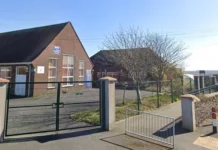While all four UK nations share broadly similar approaches to child protection, there are some minor differences between them – all of which we’ll be discussing in the following post.
Every country has their own set of rules and protection systems which are designed to protect children from experiencing abuse and neglect. This is the same in the UK, where England, Wales, Scotland and Northern Ireland all have their own distinct set of policies which are closely followed to keep children safe.
While this has long been the case, the fact that all four countries have different policies when it comes to child protection can cause some confusion, especially if thorough research isn’t conducted. For example, getting the CPS to drop charges before your court date may have different rules in one country than another, based on evidence and acquittal rules. The same goes for almost any element of the court proceedings, which may differ in each region.
Here, we outline how child protection is treated in each of the UK’s four nations, discussing any notable similarities and differences along the way. To find out more, be sure to read on below.
England’s Child Protection Policy
In England, the Department for Education (DfE) is responsible for child protection. The DfE sets out the policy, legislation and guidance for how the child protection system should operate. On a local level, ‘safeguarding partners’ are responsible for child protection policy, procedure and guidance.
How are Concerns About Children Reported in England?
In England, it’s expected that anyone working with children will report a concern about a child’s welfare. Also, anyone who comes into contact with children and families has a role to play in sharing information and identifying concerns.
The Children Act 2004 also stipulates that a statutory duty is also placed on certain agencies to operate safeguarding procedures for children. These include:
- Local authorities
- NHS services and trusts
- Police
- Probation services
As you might expect, if a child is in immediate danger, someone should contact 999. If the child is not in immediate danger, then it is recommended that the following steps are taken:
- An organisation’s child protection procedures are followed
- Contact the NSPCC Helpline
- Contact local child protection services
- Contact the police
What Child Protection Measures Are Followed in England?
- Child Protection Plan: a child protection plan sets out the actions that need to be taken, by when and by whom. This plan is reviewed at regular intervals until the child is no longer in danger.
- Care Proceedings: professionals may conclude that parents or carers cannot provide safe care, leading to local authorities taking the child into care.
- Voluntary Accommodation: a child could be taken into care voluntarily though Section 20 of the Children Act 1989.
- Court Proceedings: courts will make sure that a child had a guardian to look after their interests if a case goes to the Family Court.
- Care Orders: a court will make a full care order for a child if they are convinced that the child is suffering significant harm or an order would be better for the child. The court will issue either a placement order or an adoption order.
Wales’ Child Protection Policy
The Social Services and Well-Being (Wales) Act 2014 provides the legal framework for child protection in Wales. Regional safeguarding boards co-ordinate to promote the welfare of children. Boards include:
- Local authorities
- Chief office of police
- Local health board
- NHS trust
- Provider of probation services
How are Concerns About Children Reported in Wales?
The same procedures are followed as in England when it comes to the reporting procedure for children in danger. The duty to report in Wales falls under the rules set out in the Social Services and Well-being (Wales) Act 2014.
This requires ‘relevant partners’ of a local authority to inform the local authority if they have concerns about a child. ‘Relevant partners’ may include teachers or social work practitioners.
What Child Protection Measures Are Followed in Wales?
Child Protection Register
In Wales, the child protection register (CPR) is a list of all children in a local area who have been identified as being at risk of abuse or neglect. The CPR allows authorised individuals to check if a child they are working with is at risk.
Care proceedings, voluntary accommodation, court proceedings and care orders are followed in a very similar manner to England.
Scotland’s Child Protection Policy
The Scottish Government is responsible for child protection in Scotland, while the Child Protection Committees (CPCs) are responsible for multi-agency child protection policy. The national approach for improving outcomes for children and young people in Scotland is called Getting it right for every child (GIRFEC).
How are Concerns About Children Reported in Scotland?
In Scotland, there is no legal requirement to report concerns about a child’s welfare. This may make it tricky to gather evidence in court for if an adult is attempting to get the CPS to drop charges, or if a child is seeking a change in home.
That being said, the National guidance for child protection states that all agencies have a responsibility to actively consider potential risks to a child.
The reporting procedure for a child in immediate danger remains the same as England and Wales, with the only difference being that is recommended someone should also contact the Local Children’s Reporter.
What Child Protection Measures Are Followed in Scotland?
Child Protection Register
Similar to Wales, Scotland have a child protection register (CPR) which identifies children at risk of significant harm.
Care proceedings, voluntary accommodation, court proceedings and care orders are followed in a very similar manner to England and Wales.
Northern Ireland’s Child Protection Policy
The Northern Ireland Executive, via the Department of Health, is responsible for child protection in Northern Ireland. The Safeboarding for Northern Ireland (SBNI) co-ordinates the effectiveness of the work that is designed to promote the welfare of children.
How are Concerns About Children Reported in Northern Ireland?
Guidance for reporting safeguarding concerns in Northern Ireland is found in the Cooperating to safeguard children and young people in Northern Ireland framework (2017).
The reporting procedure for a child in immediate danger remains the same as England, Wales and Scotland.
Child Protection Register
Similar to Wales and Scotland, Northern Ireland have a child protection register (CPR) which identifies children at risk of significant harm.
Care proceedings, voluntary accommodation, court proceedings and care orders are followed in a very similar manner to England and Wales.
Are You Clear on the Steps for Reporting a Child Protection Issue in the UK?
In this post, we’ve covered the similarities and differences in child protection approaches in all four UK countries. As you can see, they are all very similar, with minor changes which may confuse court proceedings in various countries.
If you’re looking to gather evidence to get the CPS to drop charges, or alternatively to prove a child is in danger, you should seek the help of a local solicitor to get it right.
Have you got any further questions about child protection policies in the UK? Feel free to leave them in the comments below!
Please be advised that this article is for general informational purposes only, and should not be used as a substitute for advice from a trained legal professional. Be sure to consult a legal professional or solicitor if you’re seeking advice regarding child protection. We are not liable for risks or issues associated with using or acting upon the information on this site.
Photo credits:
Photo 1 – Caleb Woods via Unsplash
Photo 2 – Guillaume de Germain via UnsplashPhoto 3 – Maxime Bhm via Unsplash
Help keep news FREE for our readers
Supporting your local community newspaper/online news outlet is crucial now more than ever. If you believe in independent journalism, then consider making a valuable contribution by making a one-time or monthly donation. We operate in rural areas where providing unbiased news can be challenging. Read More About Supporting The West Wales Chronicle


























